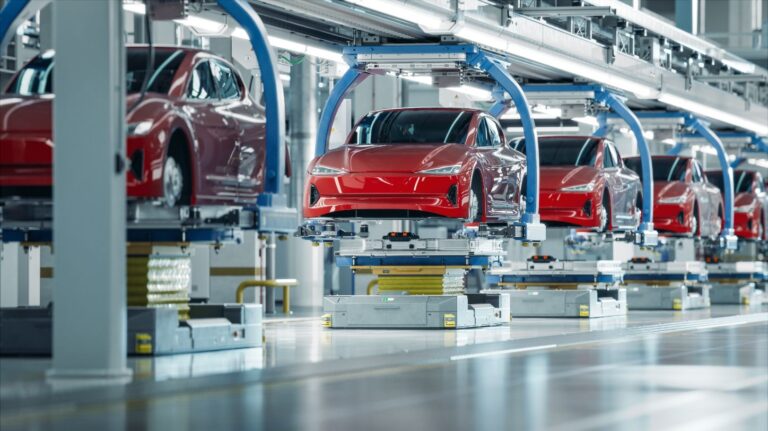As with all new trends, ‘smart manufacturing’ is a phrase we seem to be seeing everywhere. From specialist magazines to funding calls, smart manufacturing is an identified need for ensuring the future of our society and economy. But what is smart manufacturing, and does it mean the same to you as it does to me?
When I think of ‘smart manufacturing’, I am picturing a factory swarming with robots, automated decision making, reconfigurable floors and morphing cells. I see adaptable user interfaces, straightforward programming, virtual commissioning, flexible certification, digital threads, all put together in a sustainable way where at least net zero is an achieved reality — but are we there yet? Not quite. To begin with, that picture requires a lot. To introduce what I see as smart manufacturing requires all our research problems to be solved (including problems we may not have even thought of yet), as well as considerable amounts of new technologies being adopted overnight in industries that are highly regulated and still unsure of the benefits of changing the status quo.
The lack of targeted, longer-term funding is a major detriment to problem solving. Technology trends and drivers change year on year, which does not allow for many brilliant ideas to be funded or for enough of them to reach the shop floor. For example, if you look at the top five robot trends for 2023 and 2024 as reported on by the International Federation of Robotics, you cannot see two of them being the same. Arguably, AI is present in both lists but, even so, it is changing its focus.
The questions remain. How can this be? How can we shift our attention from one thing to the other so fast? We clearly do not spend enough time on consolidating what we achieved. That is potentially because not enough grant funding is targeted at the mid-levels of technology readiness (TRL). There is still a big gap between what you see in research centres and what you see in factories. We tend to fund ‘the next big thing’ and we do not invest enough in getting ‘the current thing’ on a production line. By the time you bring one idea from TRL 1 to TRL 4 (i.e., proof of concept in a laboratory setting), the technology trends have changed, and the funding goes with it. The current model does not allow for ideas to reach TRL 9 (i.e., solution in production environment), which is perhaps one of the needed changes to enable that shift on the manufacturing shop floor and to push those brilliant solutions out of the research centre.
On the other hand, full adoption of the technology itself is sometimes still a barrier even if higher TRLs are achieved; from people thinking that automation means robots coming in and taking their jobs, to legislation not catching up with innovation fast enough, many clever and potentially world-changing solutions are left stuck in a never-ending loop of failure to launch.
Getting the supply chain to keep up is crucial as well. That supply chain tends to be reliant on small and medium enterprises (SMEs), for which Industry 4.0 is still unachievable for several reasons (e.g., lack of skills, lack of capital, etc.), while the funding bodies are already talking about Industry 5.0. The gap and inequity between small and big organisations need addressing, too.
Smart manufacturing exists — albeit in research organisations mainly. What is needed is updated funding models to get innovation from research centres into factories, access to funding for all organisations big or small, more streamlined and simplified funding application processes and the trust that adopting new technology and embracing change is the way forward for a sustainable, efficient and better tomorrow.
This piece was written by Dr Daniela Sawyer, senior theme lead – automation, The University of Sheffield’s Advanced Manufacturing Research Centre. Read it in print.









